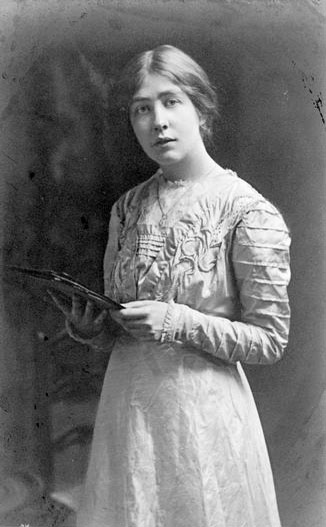
Montage of famous women: Hatshepsut, first female pharaoh of Ancient Egypt; Ieshia Evans, peaceful protester in Baton Rouge, LA; Harriet Tubman; Taylor Swift. Source: gossiponthis.com
It all started with a tweet posted by a devoted fan back on November 9, 2017. Inspired by a line in a song from Taylor Swift’s new album, the fan rhetorically challenged social media users to “Name a b*tch badder than Taylor Swift.” What happened next was a virtual crash course in women’s history, with Twitter users providing brief biographies of women from ancient times to the present, and from famous people to family members. It was an incredible, spontaneous response. This viral trend got me thinking about the intersection between popular culture and history, the language we use to reclaim and empower, and how institutions can use social media platforms to educate and inspire people to share stories about women’s history.
The use of social media to share and promote women’s history is not new. While many museums and cultural organizations still choose to primarily restrict their women’s history blog posts, tweets, and other content to March for “Women’s History Month,” other organizations like the Art + Feminism Campaign use this month as a springboard to push the boundaries for online audience engagement and content creation. For five years, Art + Feminism has been enlisting international institutions like the National Museum for Women in the Arts (NMWA) to host Wikipedia “Edit-a-thons” for people to crowdsource biographical entries for women artists. NMWA has taken social media engagement one step further, capitalizing on hashtag activism trends with their award-winning and international 2016 campaign, “Can You Name #5WomenArtists?” Such strategies manage to capture public interest and challenge people to learn more, while highlighting the exclusion of women’s work and stories and simultaneously harnessing the democratic tendencies and immediacy of social media.
In a similar way, the more organic “badder b*tch/Taylor Swift” trend leveled a challenge at the Twitterverse to share examples of strong women who inspire them. This, in and of itself, wouldn’t necessarily have been enough to make it go viral; the connection with a controversial celebrity like Taylor Swift, paired with provocative language definitely helped. But what lessons might women’s historians and cultural organizations learn from a Twitter trend like this?

One of my choices for this list would be British suffragist, socialist, and anti-colonial activist Sylvia Pankhurst.
One takeaway is that the interest in women’s stories and lived experiences is already there, and even heightened, in the wake of the #MeToo movement and 2017 Women’s March. Moving forward, how can institutions tap into this pre-existing desire for women’s history and cultural context of collective storytelling in a meaningful way, and connect it back to their missions and collections?
Second, people love a challenge, rhetorical or real, like the “Can You Name #5WomenArtists?” campaign in which they can test and share their own knowledge and the knowledge of others. Social media platforms and gaming can provide accessible, immediate, and even fun ways to engage with women’s work and stories, and invite people to learn more. Hashtag campaigns and things like the “Google Doodle” can be a gateway for further learning about women’s history.
Third, never underestimate the power of celebrity culture and/or some degree of controversy to garner attention for your message. While this tactic can spark a conversation and attract people who might not normally visit your organization online, it could also detract from your message and alienate some of your loyal followers,and thus should be used with caution. In the case of “badder b*tch/Taylor Swift,” I personally found the use of the term “b*tch” to be problematic in reference to strong women in history. However, I can also see the power and value in people’s ability to reclaim and reinterpret a derogatory term that is traditionally used to undermine and insult women.
As Aubrie Johnson from the Wikimedia Foundation reminds us, “a social media campaign does not magically ‘fix’ the gender gap,” either on Wikipedia or elsewhere. However, it can “[change] the conversation within our community–making [it] feel less like a ‘boy’s club’ and more like a free market of knowledge.” With that in mind, here’s to Taylor, her devoted fan, and all of the Twitter participants who shared their stories of women, past and present, who inspire them.
Who would you add to the list?
Like this blog and want to learn more about women’s history? Visit Remember the Ladies, the official blog of the Women’s History Affinity Group at AASLH.

